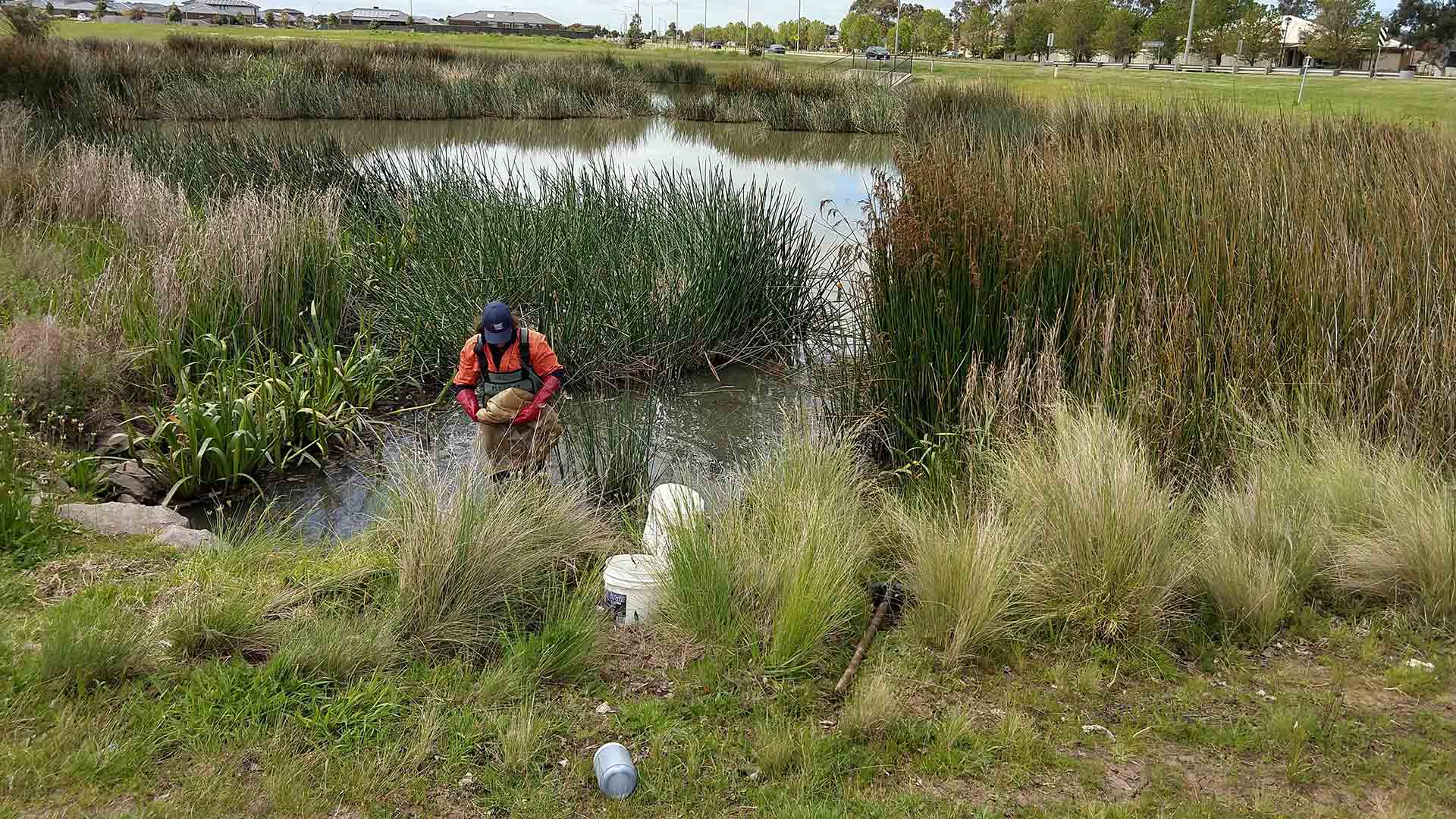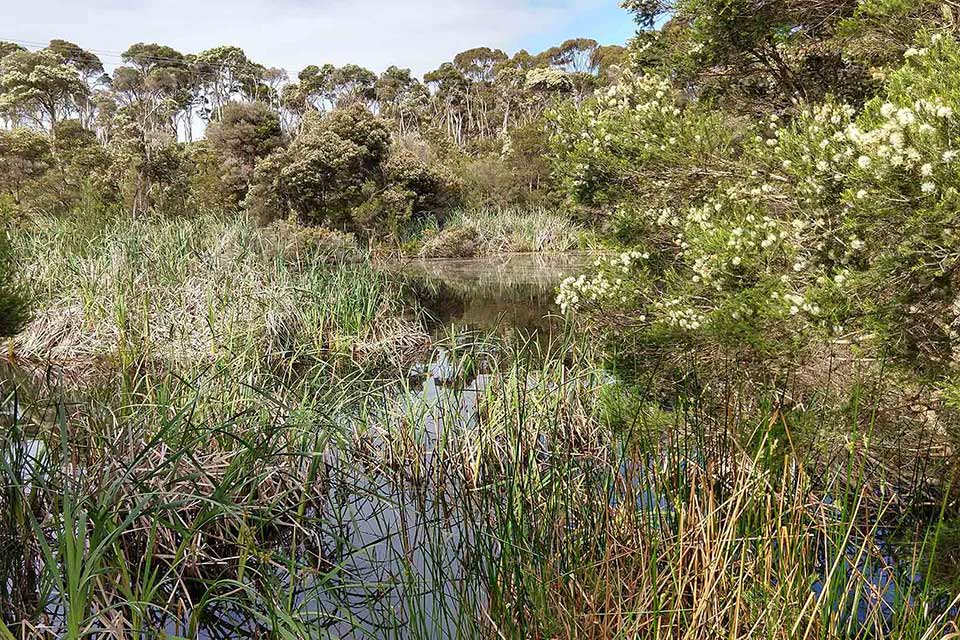For: Western Port Environment Research Program 2011-2017, co-ordinated by Melbourne Water, then for Melbourne Water
Background
This project began in 2011 assessing the risk toxicants pose to the Western Port environment. This included the bay and associated waterways and wetlands. The current program focuses on how urban land use and wetland characteristics influence contaminant occurrence and distribution in sediment and waters. This research is associated with many of the A3P core projects (see project summaries in this section).

Key Points
- This project provided the first evidence of pesticides being transported via water into Western Port
- It used catchment studies and a multiple lines of evidence approach, including laboratory toxicological studies on seagrass & mangroves, which are relevant to Western Port
- Forty-four pesticides were detected in surface water and sediments, with several at concentrations that are of concern for the health of local aquatic species
- The types of pesticides found point to heavy agriculture (market gardens) use as the likely source, with continued urbanisation altering the catchment further
- The current focus of this project is on wetlands as they serve to protect the downstream environments of Western Port, with a PhD candidate appointed in late 2021, to investigate the sources, fate and transport of Microplastics in Wetlands
- We are looking (Feb 2022) for a second PhD candidate to address microplastics specifically across Western Port
- Related investigations are occurring in the A3P Project: What are the effects of chemicals frequently used by Melbourne Water along waterways on aquatic ecosystems. This project is investigating pesticide use practices and may make practice change recommendations

Reports and presentations
These can be accessed via the Melbourne Water website, and include:
- Report- Sediment toxicants in Western Port 2011
- Report- Pesticide Risk Assessment in north-east Western Port 2019
- Summary report Understanding the Western Port Environment 2018
- Talk: Toxicants - Western Port Forum 2019
Expected completion date: PhD 2024
For more information, contact Jackie.Myers@rmit.edu.au
#WesternPort #WesternPortCatchment #MultipleLinesOfEvidence #pesticides #AgriculturalImpacts #wetlands #biomonitoring #microplastics #macroplastics


